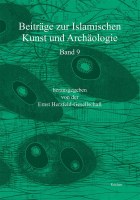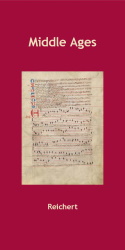Short Description
The concepts of frontier, boundary, and border, and consequently of spaces and regions they delimit, have left a persistent mark on the perception of geography, whether expounded in
premodern Muslim textual sources, or by modern geostrategists. The ten essays in this volume explore diverse aspects of geographic, confessional, political, and theoretical liminality spanning from Early Muslim Arabia to contemporary Islamic art. In addition to art historians and archaeologists, this volume is of interest for students and scholars of Border Studies, as well as Social and Cultural Studies.
Description
This volume brings together papers delivered at the 15th Colloquium of the Ernst Herzfeld Society under the title Spaces and Frontiers of Islamic Art and Archaeology. The ten essays, explore diverse aspects of geographic, confessional, political, and theoretical liminality spanning from Early Muslim Arabia to contemporary Islamic art. Spatial delineation is the main concern of Aila Santi’s study in which the equation of the House and Mosque of the Prophet in Medina is brought into question. In the essay by Balázs Major, the spatial, functional, and aesthetic repercussions of a military takeover are examined through the case of the Mediaeval Syrian fortress of Qalat al-Marqab. Laura Hinrichsen follows the routes and fortunes of Mediaeval Arabic manuscripts from Ḥafṣid Tunis to scholarly libraries in Europe in the wake of the Habsburg conquest of Tunis in 1535, while Maximilian Hartmuth draws attention to an unanticipated dialogue between domed mosques, built on both sides of the 19th -century border between a retreating Ottoman and an advancing Austrian Empire. Two mind frames are juxtaposed in the article by Elahe Helbig: that of the inquiring 19th-century Swiss industrialist and collector Karl Emil Alpiger (1841–1905), on one side of the camera lens, and the inhabitants of a rural Persia with their changing world, on the other. Filiz Tütüncü Çağlar re-examines both the Eurocentric and Turkified nationalist perceptions of late-Ottoman archaeology, bringing some non-Western, yet not non-Muslim, protagonists to centre stage and also reminding the reader of the inevitability of international collaboration in archaeological work. Another historiographical survey is offered by Zehra Tonbul who pinpoints two major tendencies below the surface of some heated debates in the scholarly circles of fin-de-siècle Berlin and Vienna: one, hallmarked by Josef Strzygowski, according to which the main carriers of change in art history are migration and geographic diffusion, and another one, led by Carl Becker, which regards changes as the results of a universal cultural historical development. In Berenike Metzler’s theoretical study the hermeneutical border between writing, text, and image, is examined in Arabic and Persian treatises on calligraphy. Gregory Minissale traces the Mughal concept of space as far as the Mughalesque compositions of contemporary Pakistani artists. Finally, the volume includes an analysis by Yuka Kadoi about the East Asian sartorial fashion adopted by the Persian Surūsh, a liminal character between this world and the other. In addition to art historians and archaeologists, this volume is of interest for students and scholars of Border Studies, as well as Social and Cultural Studies.
Biographical Note
Iván Szántó (Budapest, 1977) is Chair of the Department of Iranian Studies of the Eötvös Loránd University (ELTE), Budapest, Hungary, since 2015. Between 2010 and 2017 he was leader of a project at the Institute of Iranian Studies, Vienna, Austria. In 2018 he was scholar in residence at the Getty Research Institute in Los Angeles, USA. His research interest covers diverse aspects of Iranian art history in the Islamic period, as well as the interactions of Islamic art with neighbouring regions.
Series Description
The aim of the Ernst Herzfeld Society is an adequate edition of all papers presented at the colloquia and other articles of academic value.




 Preface
Preface

 Neuerscheinungen 2023/2024
Neuerscheinungen 2023/2024
 Gesamtverzeichnis 2023/2024
Gesamtverzeichnis 2023/2024
 Katalog Oriental Studies & Linguistics
Katalog Oriental Studies & Linguistics
 Mittelalter
Mittelalter
 Deutsche Inschriften
Deutsche Inschriften
 Musiktherapie
Musiktherapie
 Literaturen im Kontext
Literaturen im Kontext